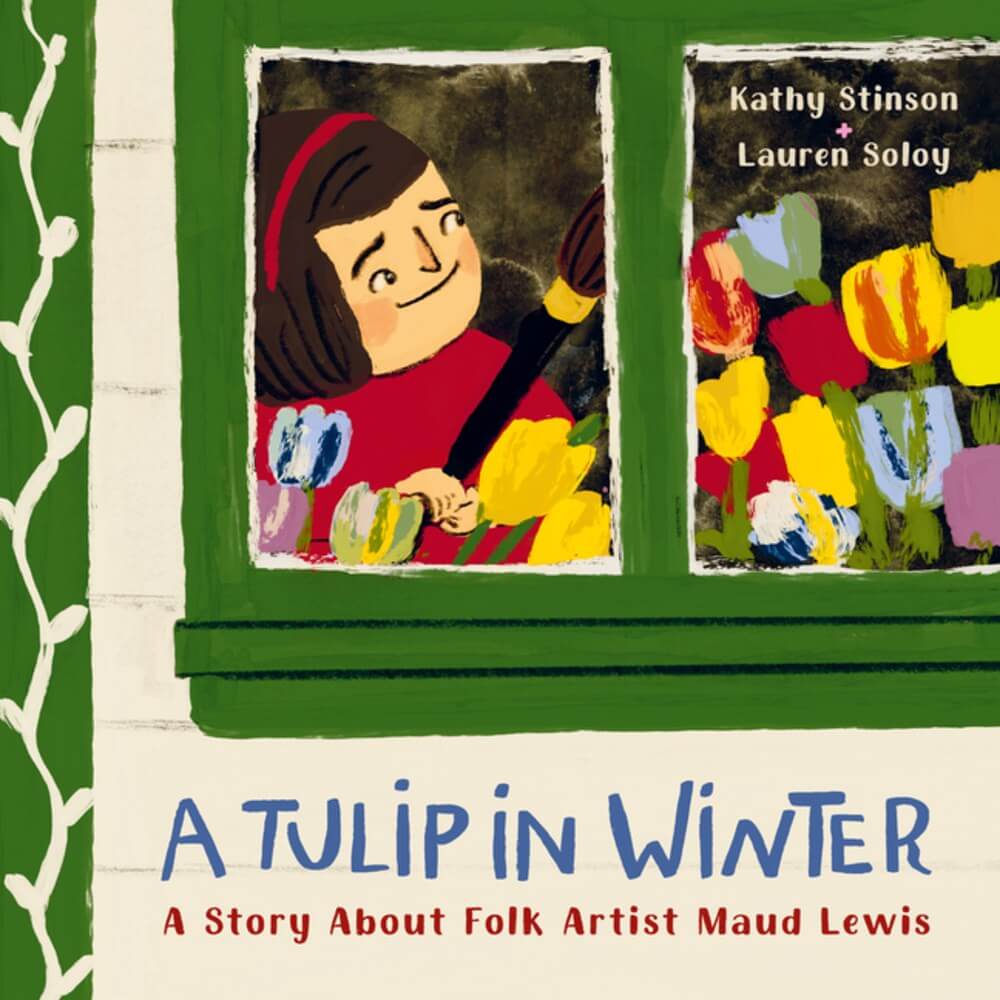Canadian author Kathy Stinson and illustrator Lauren Soloy’s A Tulip in Winter is a vibrant biography of folk artist Maud Lewis from two creators familiar with the Nova Scotian landscape that Lewis called home.
Although Lewis had a happy childhood, she was also “teased . . . for how she looked, her crooked walk, and how small she was.” Lewis’ hands grew stiff from a condition her doctors could not explain, revealed in the book’s back matter to be severe rheumatoid arthritis. The condition prevented her from playing the piano, so her mother gave her a paintbrush and launched Lewis’ life in art: “Red on white made its own kind of music,” the girl eagerly discovered.
A Tulip in Winter touches on the many challenges in Lewis’ life: She struggled to find employment, and after her parents’ deaths, she moved in with her aunt, who discouraged her niece’s art. Eventually, Lewis moved into a small, plain house owned by a fish peddler named Everett and soon filled the house with color, painting floral and other natural motifs on the stairs, walls, tea canisters, dustpans and more. “Everett was strong in body. Maud was strong in spirit. They got along the way certain colours do,” Stinson writes. The book’s final spread acknowledges the fame Lewis achieved after her death: “So small was her house that it is now nestled inside the Art Gallery of Nova Scotia.”
Stinson emphasizes that the foundation of Lewis’ distinctive art was her ability to notice things, even when she was unable to leave her home. Her admiration and respect for Lewis permeate every page, while Soloy’s thick-lined, brightly colored illustrations capture the essence of Lewis’ joyous art. Full-bleed spreads bring Lewis’ childhood to life with period details such as horse-drawn carriages and historical clothing, and many spreads are overlaid in white-lined drawings of the things Lewis observes in nature, including flowers, birds, trees, ocean waves and more. The book’s seamless blend of text and art provides a superb introduction to the work of a woman who found “beauty in the everyday.”






























